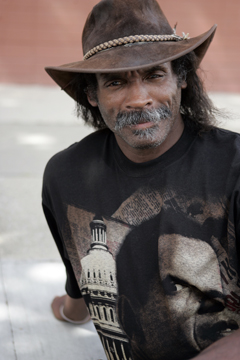
New option for drug rehab piloted in San Benito
San Benito residents with a history of drug abuse and
convictions have a new option to get clean and sober with a drug
court pilot program starting in June.
New option for drug rehab piloted in San Benito
San Benito residents with a history of drug abuse and convictions have a new option to get clean and sober with a drug court pilot program starting in June.
“We have a huge number of people in this county whose underlying problem is substance abuse, mental health, or both,” said Steven Sanders, a superior court judge of San Benito County.
People with a prior drug conviction, or those who failed other drug programs, might qualify for drug court, Sanders said.
The judge and county staff will meet in May to choose the candidates for the program.
Monterey County has run a drug court program since 1995, said Tabatha Weeda, a drug court coordinator for Monterey County.
Shannon Hayes, 47, graduated from Monterey County’s drug court more than a year ago. He has been sober for two years and nine months.
Hayes was busted for possession of methamphetamine in 2005. He had been using meth since he was 17.
“Probably after a year is when I could really say my head really started clearing up,” Hayes said. “When you use drugs for so long, it’s a long road back.”
Hayes is living with AIDS.
“I tested positive in ’89, so life was pretty rough,” Hayes said. “I was pretty sick for quite a few years, so a lot of my drug use was self-medication. It was all pretty downhill.”
Now, Hayes works as an intern at a residential drug treatment program. He is working towards certification as an addiction specialist.
Without drug court, he would have died, Hayes said.
“I’ve been through other programs and I tried to quit on my own,” Hayes said.
Hayes was sent to prison twice, in 1989 and 1995 and was facing a six-year sentence when he enrolled n the program.
“There was no real rehabilitation there,” Hayes said. “Going to drug court, I felt supported by the system – the judges and the drug court staff. They don’t give up.”
Hayes graduated from drug court after 18 months.
Drug court is collaborative.
Judges, and staff from the District Attorney’s office, the public defender’s office, the probation department and behavioral health all participate, Sanders said.
Clients in Monterey have three appointments per week, court appearances, drug testing and group therapy.
The frequent appearances help build a therapeutic relationship, Weeda said.
“When clients first come into court, they’re thinking of courts as the old traditional courts, the enemy,” Weeda said.
Drug court uses sanctions and incentives to motivate clients.
“We’re going to have more incentives and more clearly defined sanctions,” Sanders said.
Classic incentives are free teeth cleaning or lunch with the judge, Sanders said. Drug court staff will reach out to the community for help offering such incentives, Sanders said.
Jail time is a possible sanction for a dirty test.
San Benito is one of five counties in California that do not have a drug court program.
“We’re doing drug-court light,” Sanders said. “We’re doing 85 percent of drug court.”
San Benito’s program requires less frequent court appearances upfront.
Frequent court appearances are crucial in the early stages, Weeda said.
“That kind of sets the foundation for everything else,” Weeda said. “They learn how to keep appointments, how to be held accountable.”
San Benito County behavioral health administrators received an $18,000 grant from California officials to run the pilot program, Sanders said.
The grant will not cover the county’s costs in terms of staff time. County administrators understand that and are willing to pay for the program, Sanders said.
“We’re going to pay for our end, and not get covered by the grant,” Sanders said, referring to San Benito County Superior Court.
Hopefully the cost will pay off in terms of prevention, he said.
The success rate for Monterey County’s Drug court has been increasing.
In 2005, 36 percent graduated from Drug court. Last year, it was 50 percent.
Some of that is due to a stable staff that works well together.
Hayes remembers his graduation day, he said.
“It’s not everyday that you get to hug the judge, or thank the judge for helping you,” Hayes said, “and that’s what happened that day.
Drug court is worth the cost, Weeda said.
“Life is worth it,” Weeda said. “It’s amazing to see somebody come in with no hope and no support, just kind of feeling like they’re done and there’s no room for growth, and to watch them through this entire process.”
The success stories are wonderful to hear about, Weeda said.
“Sometimes they are getting their kids back,” Weeda said. “Sometimes they are having an apartment for the first time on their own.”









